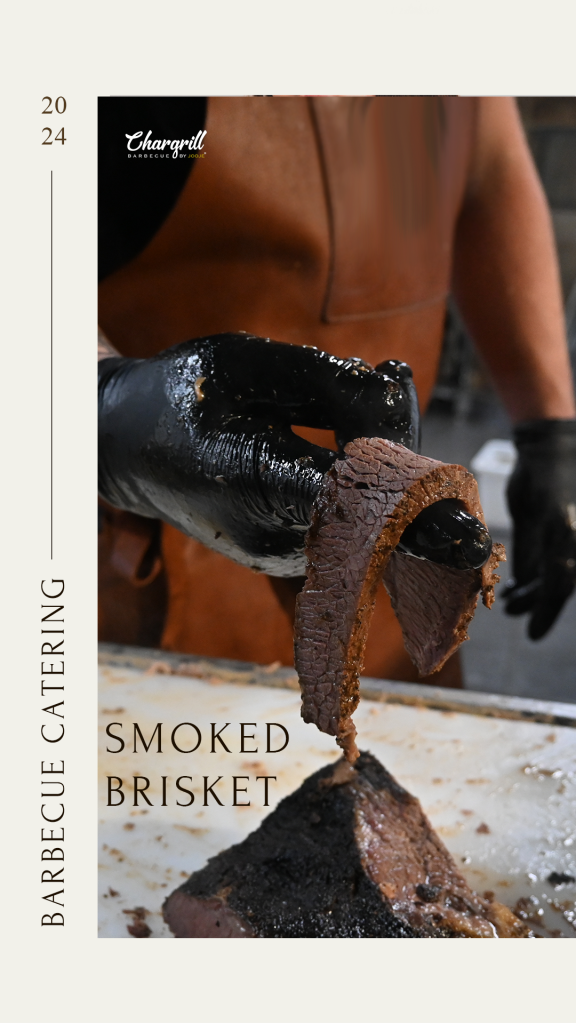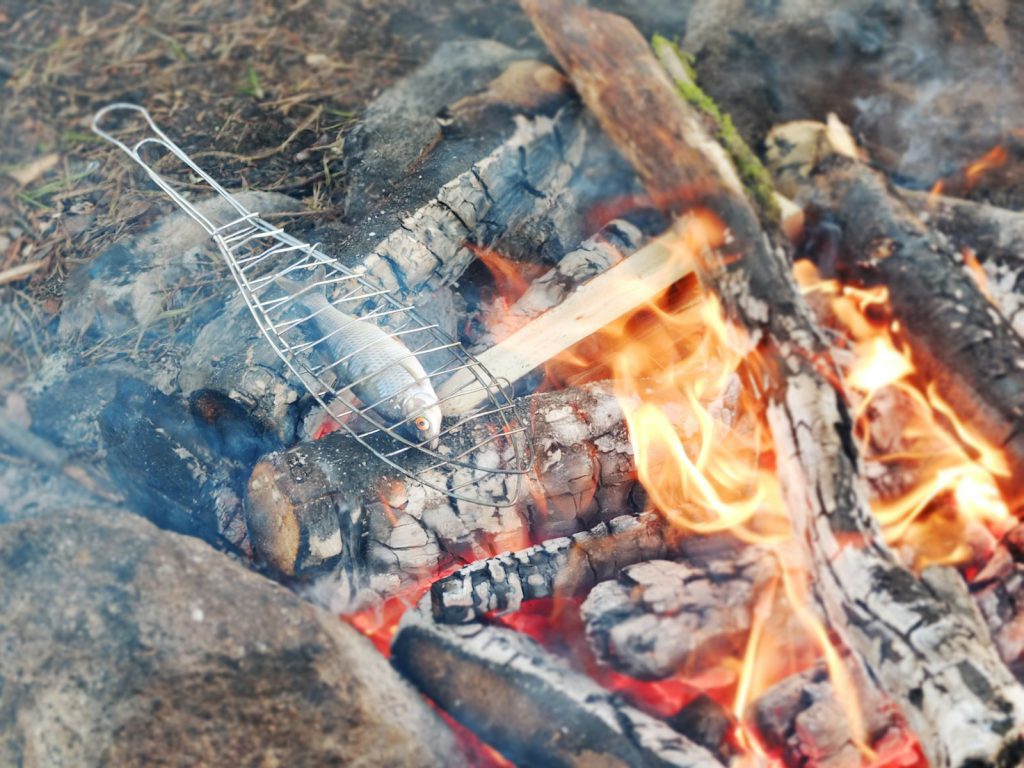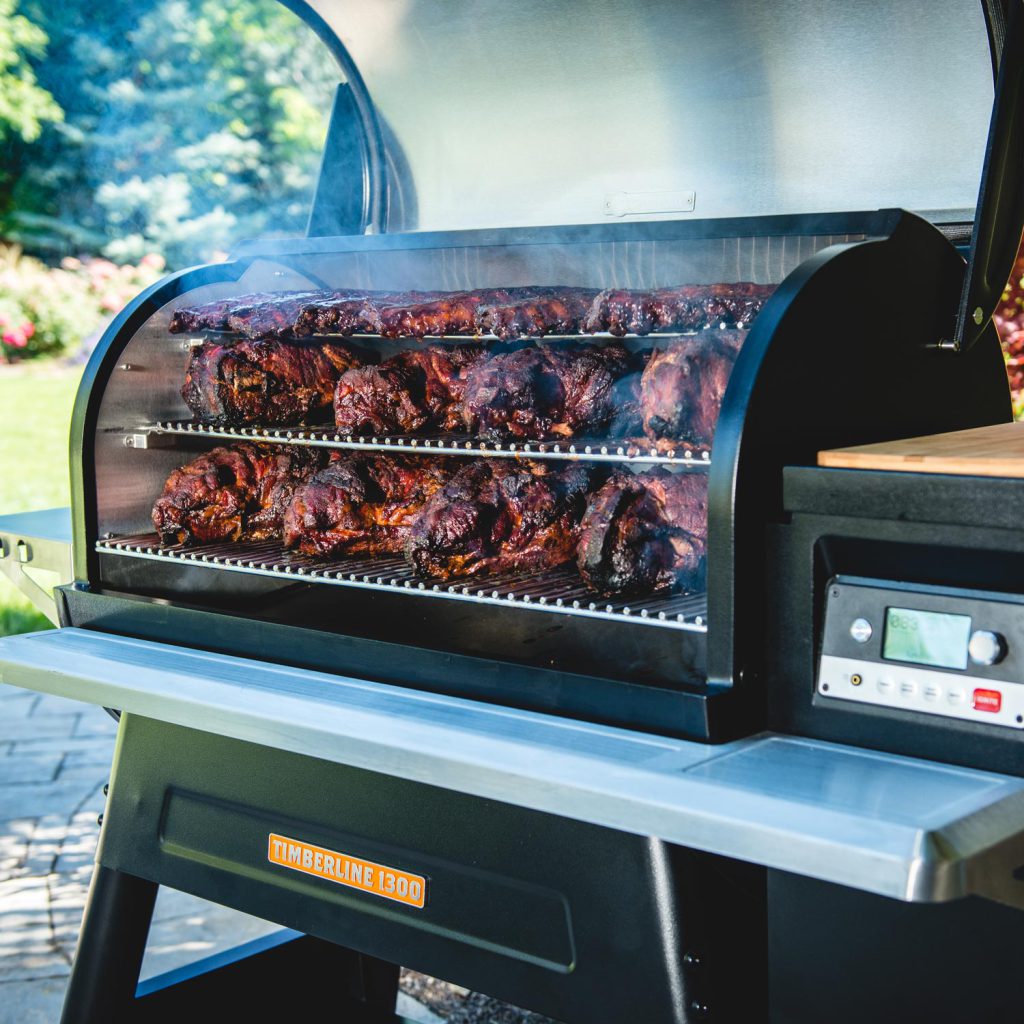Achieving the perfect smoke ring on brisket is considered a hallmark of barbecue excellence. This guide will delve into the science, techniques, and tips to help you master this art.
Understanding the Smoke Ring
The smoke ring, a hallmark of expertly smoked brisket, is a pink layer beneath the surface bark. This aesthetically pleasing ring is more than a mere visual delight; it signifies a well-executed smoking process. To understand how to achieve it, we must delve into the science behind it.
1.1 What is a Smoke Ring?
The smoke ring is a result of a chemical reaction between myoglobin in the meat and nitrogen dioxide (NO) and carbon monoxide (CO) gases produced during the combustion of wood or charcoal. Myoglobin, a protein responsible for the red color of meat, binds with these gases, retaining its pink hue even after cooking.
1.2 The Science of Smoke Ring Formation
Combustion of wood or charcoal produces gases, including NO and CO, which penetrate the meat. Myoglobin, in the presence of these gases, forms stable pink compounds. This process happens most effectively at lower temperatures, before the meat’s internal temperature exceeds 140°F.
1.3 Factors Influencing Smoke Ring Formation
- Type of Fuel: Wood and charcoal are preferred in our training over gas and electric due to higher NO and CO production.
- Temperature: Smoking at a low temperature (around 225°F) for the first few hours is crucial.
- Moisture: A moist surface helps in gas absorption, enhancing smoke ring formation.
Table 1: Comparison of Smoking Fuels
| Fuel Type | NO and CO Production | Ease of Use | Flavor Impact |
|---|---|---|---|
| Wood | High | Moderate | Strong |
| Charcoal | High | Moderate | Strong |
| Gas | Low | Easy | Moderate |
| Electric | Very Low | Very Easy | Mild |
Understanding these basics sets the foundation for achieving the perfect smoke ring on your brisket.

Preparing Your Brisket for Smoking
Proper preparation of the brisket is critical to ensure it absorbs the right amount of smoke and develops a smoke ring. This section will cover selecting the right cut, trimming techniques, and seasoning methods.
2.1 Selecting the Brisket
Choose a brisket with a good amount of marbling, which helps keep the meat moist during long smoking sessions. The ideal brisket has a uniform thickness and a flexible, bendable texture.
2.2 Trimming the Brisket
Trimming is essential to remove excess fat, which can impede smoke penetration. A properly trimmed brisket allows better smoke absorption, leading to a prominent smoke ring.
- Trim the Fat Cap: Leave a thin layer of about 1/4 inch to protect the meat and render flavor.
- Remove Hard Fats: Hard fats do not render well and can block smoke penetration.
List 1: Trimming Tools
- Sharp boning knife
- Cutting board
- Trimming gloves
- Disposable towel
2.3 Seasoning the Brisket
Seasoning should be light and even, allowing the smoke to penetrate the meat effectively. Avoid heavy rubs that can form a barrier.
- Basic Seasoning: Use a mix of kosher salt and black pepper.
- Advanced Seasoning: Include garlic powder, onion powder, and a touch of paprika for enhanced flavor without obstructing smoke absorption.
Table 2: Basic vs. Advanced Seasoning Mix
| Ingredient | Basic Seasoning | Advanced Seasoning |
|---|---|---|
| Kosher Salt | Yes | Yes |
| Black Pepper | Yes | Yes |
| Garlic Powder | No | Yes |
| Onion Powder | No | Yes |
| Paprika | No | Yes |
Proper preparation sets the stage for a successful smoking process, ensuring the brisket is ready to absorb the smoky goodness.

Setting Up Your Smoker
The type of smoker and its setup play a crucial role in achieving a perfect smoke ring. This section explores different smoker types, fuel choices, and the optimal setup for smoking brisket.
3.1 Types of Smokers
There are several smoker types, each with its pros and cons.
- Offset Smokers: Known for their ability to produce large amounts of smoke, making them ideal for smoke rings.
- Vertical Smokers: Use a water pan to maintain moisture, which is beneficial for smoke ring formation.
- Electric Smokers: Easier to use but produce less NO and CO.
- Gas Smokers: Provide consistent temperatures but similar challenges as electric smokers.
Table 3: Smoker Types Comparison
| Smoker Type | Smoke Production | Temperature Control | Ease of Use | Ideal For |
|---|---|---|---|---|
| Offset Smokers | High | Moderate | Challenging | Smoke Rings |
| Vertical Smokers | Moderate | High | Moderate | Moist Cooking |
| Electric Smokers | Low | High | Easy | Beginners |
| Gas Smokers | Low | High | Easy | Consistency |
3.2 Fuel Choices
Choosing the right fuel is vital for producing the necessary gases for a smoke ring.
- Charcoal Briquettes: Consistent heat and high NO production.
- Lump Charcoal: Burns hotter and cleaner, preferred by many pitmasters.
- Wood Chips/Chunks: Provide a robust smoky flavor and are essential for a pronounced smoke ring.
3.3 Setting Up the Smoker
- Temperature Management: Maintain a steady temperature of 225°F.
- Water Pan: Use a water pan to add moisture, which helps in gas absorption.
- Wood Placement: Place wood chunks or chips near the heat source for continuous smoke.
List 2: Essential Smoker Setup Items
- Thermometer
- Water pan
- Wood chips/chunks
- Charcoal briquettes
A well-set-up smoker ensures that the brisket is exposed to the right conditions for developing a smoke ring.

Smoking Process and Techniques
The smoking process itself is crucial. From maintaining the right temperature to managing moisture, this section covers the essential techniques.
4.1 Initial Smoking Phase
The first hour of smoking is the most critical for smoke ring formation.
- Low Temperature: Start at 225°F to allow NO and CO to penetrate the meat.
- Moisture Maintenance: Spritz the brisket with water or a water-vinegar mix every 30 minutes to keep the surface moist.
4.2 Managing Smoke Levels
- Consistent Smoke: Ensure a steady flow of thin, blue smoke rather than thick, white smoke.
- Avoid Over Smoking: Excess smoke can impart a bitter taste.
List 3: Smoke Management Tips
- Use seasoned wood.
- Avoid green or wet wood.
- Ensure proper ventilation.
4.3 Monitoring Temperature
- Meat Temperature: Use a meat thermometer to monitor the internal temperature. The smoke ring stops forming once the meat reaches 140°F.
- Smoker Temperature: Maintain consistent smoker temperature to avoid temperature spikes.
Table 4: Temperature Monitoring Tools
| Tool | Purpose | Example |
|---|---|---|
| Meat Thermometer | Monitor internal temp | Instant-read type |
| Smoker Thermometer | Monitor smoker temp | Digital probe |
4.4 Wrapping and Resting
- Wrapping (Texas Crutch): Wrap the brisket in butcher paper or foil after it reaches 160°F to maintain moisture and speed up cooking.
- Resting: Let the brisket rest for at least an hour after cooking to allow juices to redistribute.
Following these techniques ensures the brisket absorbs the smoke effectively, forming a beautiful smoke ring.
Section 5: Troubleshooting and Enhancing Smoke Rings
Even with the best techniques, issues can arise. This section addresses common problems and advanced tips for enhancing smoke rings.
5.1 Common Problems and Solutions
- No Smoke Ring: Often due to insufficient NO and CO. Ensure proper fuel and smoker setup.
- Dry Brisket: Caused by high cooking temperatures or insufficient moisture. Use a water pan and spritz regularly.
List 4: Troubleshooting Tips
- Check smoker setup.
- Ensure proper wood and fuel.
- Maintain low and slow cooking.
5.2 Advanced Techniques
- Curing Salts: Adding a small amount of curing salt (containing sodium nitrite) to the rub can enhance the smoke ring. However, this is considered cheating in competitions.
- Green Wood: Using green, unseasoned wood can increase nitrate levels, promoting a better smoke ring.
Table 5: Advanced Tips and Their Impact
| Technique | Impact | Consideration |
|---|---|---|
| Curing Salts | Enhances smoke ring | Not for competitions |
| Green Wood | More nitrates | Requires careful handling |
5.3 Myths and Misconceptions
- Myth: Heavy smoke equals a better smoke ring.
- Fact: Thin, blue smoke is more effective and less likely to impart bitterness.
Understanding these advanced tips and troubleshooting common problems ensures consistent results in achieving a smoke ring.

Final Presentation and Serving
The culmination of all your hard work and meticulous attention to detail is the moment you present and serve your perfectly smoked brisket. Proper slicing, presentation, and serving techniques not only enhance the visual appeal but also maximize the flavor and texture of the brisket.
6.1 Slicing the Brisket
Proper slicing of the brisket is crucial to ensure tenderness and maintain the integrity of the smoke ring.
- Identify the Grain: Before slicing, identify the direction of the grain in the meat. This is easier to do before cooking but can also be done afterward by examining the muscle fibers.
- Against the Grain: Always slice against the grain. This shortens the muscle fibers, making each bite more tender.
- Thickness: Aim for slices that are about 1/4 inch thick. This thickness helps to showcase the smoke ring and maintain the meat’s juiciness.
List 5: Tools for Slicing
- Sharp carving knife
- Meat slicing guide
- Cutting board with juice grooves
- Meat fork
6.2 Presentation
Presentation is an important aspect, especially if you’re serving guests or entering a competition.
- Plating: Arrange the slices neatly on a platter, fanning them out to showcase the smoke ring.
- Garnishing: Add a touch of color with garnishes such as fresh herbs or slices of grilled vegetables.
- Accompaniments: Serve with classic barbecue sides like coleslaw, baked beans, and cornbread to complement the flavors of the brisket.
Table 6: Presentation Tips
| Aspect | Tip | Benefit |
|---|---|---|
| Plating | Fan out slices | Showcases smoke ring |
| Garnishing | Use fresh herbs | Adds color and freshness |
| Accompaniments | Serve with classic BBQ sides | Enhances overall meal experience |
6.3 Serving Techniques
- Resting: Allow the brisket to rest for at least 30 minutes after smoking. This helps the juices redistribute throughout the meat.
- Temperature: Serve the brisket warm. If needed, keep it in a warm oven (about 150°F) until ready to serve.
- Sauces: Offer barbecue sauce on the side rather than coating the slices. This allows the guests to appreciate the smoke ring and the flavor of the meat without being overwhelmed by the sauce.
6.4 Storage and Reheating
If you have leftovers, proper storage and reheating techniques will help maintain the quality of the brisket.
- Storage: Wrap the brisket tightly in aluminum foil or plastic wrap and store it in the refrigerator for up to four days. For longer storage, use a vacuum sealer and freeze the brisket.
- Reheating: To reheat, place the brisket in a baking dish with a little beef broth, cover it with foil, and warm it in a 300°F oven until heated through. This method helps retain moisture and prevent drying out.
List 6: Reheating Steps
- Preheat oven to 300°F.
- Place brisket in a baking dish with beef broth.
- Cover with foil.
- Heat until warmed through, about 30-40 minutes.
By following these presentation and serving tips, you ensure that your brisket not only looks impressive but also tastes delicious, leaving a lasting impression on your guests.
Conclusion
Achieving the perfect smoke ring on brisket is an art that combines science, technique, and a bit of patience. Understanding the role of myoglobin and the gases produced during smoking, selecting and preparing the right cut of meat, setting up your smoker correctly, and following precise smoking techniques all contribute to creating that coveted pink ring.
Here’s a quick summary of the key points covered:
- Understanding the Science: The smoke ring results from a chemical reaction between myoglobin in the meat and NO and CO gases produced during combustion.
- Preparing the Brisket: Selecting a well-marbled cut, trimming excess fat, and applying the right amount of seasoning are essential.
- Setting Up the Smoker: Using the right type of smoker and fuel, maintaining low temperatures, and ensuring moisture are crucial.
- Smoking Techniques: Managing smoke levels, maintaining consistent temperatures, and using methods like spritzing and wrapping help achieve a smoke ring.
- Troubleshooting and Enhancing: Identifying and solving common problems and using advanced techniques like curing salts or green wood can enhance smoke ring formation.
- Final Presentation: Proper slicing, presenting, and serving the brisket, as well as storing and reheating leftovers, ensure that your hard work pays off in the final dish.
By mastering these steps, you’ll not only create a visually stunning smoke ring but also produce a flavorful, tender brisket that showcases your barbecue skills. Happy smoking!



